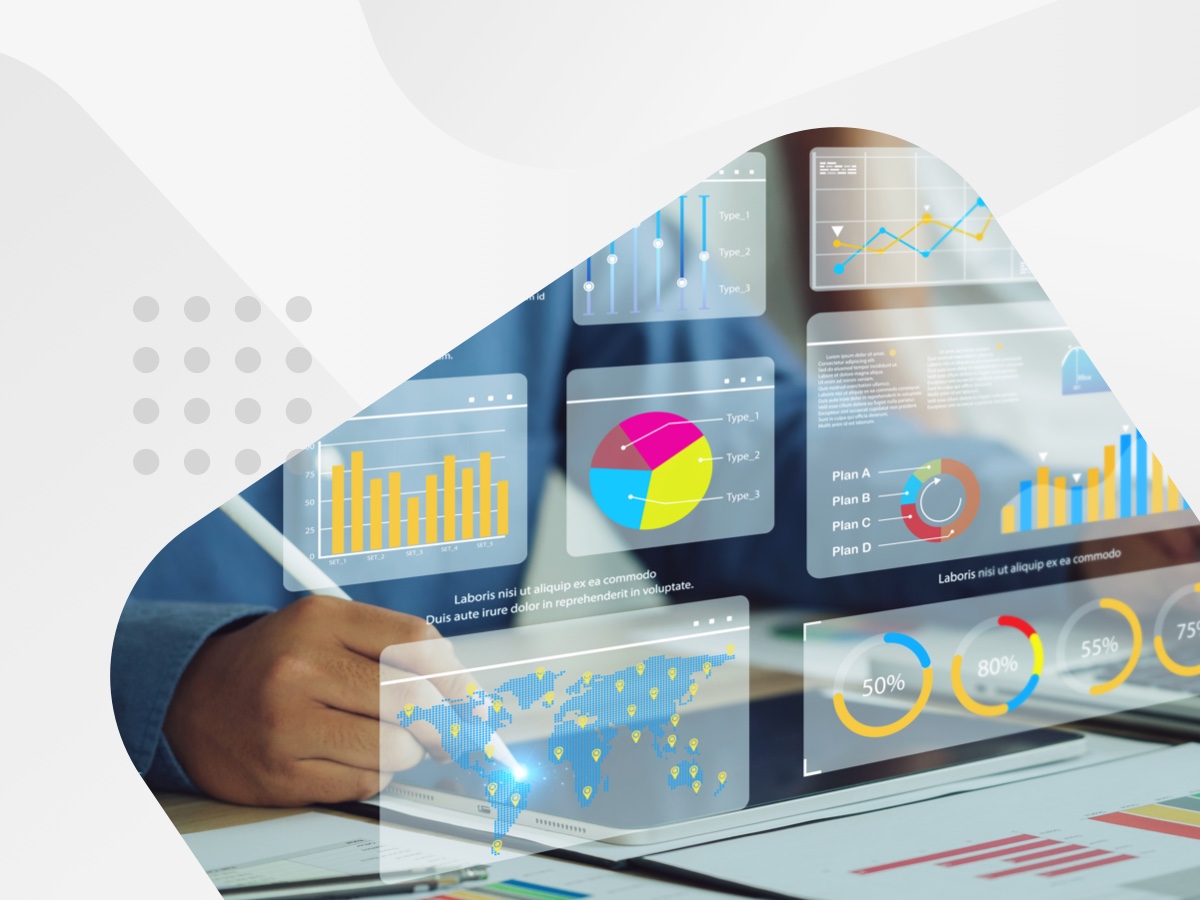Companies are increasingly exploring new ways to analyse and leverage the data they collect. Trended data describes the analysis of a dataset over time, as opposed to a snapshot at a single moment. This method can paint a more comprehensive picture of any patterns or trends that may develop for debtors or consumers – informing future decision-making.
What does trended data mean?
Clean data logging is critical to modern business management. Astute companies must collect a wide array of information from consumers, suppliers, creditors and more. Often, this data is viewed at single points in time – like a freeze frame. ‘Trended data’ instead involves observing a dataset over a length of time – more like a film.
Using trended data solutions adds a predictive layer to the analysis. For example, you might record all debtor data over a financial quarter. Not only will you see the position of a customer at a single point in time, but also their previous position and how it correlates to similar entities. This practice may improve the accuracy of your business’ predictions as you acquire more information.
What are the characteristics of trended data?
In maths terms, trended data adds an x-axis (time) to the number plane. Say that you record data for the same group of customers monthly. Trended data solutions connect those data points over multiple months, forming what’s known as a ‘trendline’. Not every trendline shows a pattern of behaviour – some entities’ data will jump up or down without much apparent rhyme or reason. However, often they do reveal a potential trajectory. If a customer’s data goes steadily down month-on-month (expressed by a negative trendline), they are considered more likely to continue in that direction.
So long as the information provided is accurate and well-kept, trended data solutions increase in usefulness the longer they are in place. For example, you may observe consistent seasonal fluctuations if the data spans several years. Generally speaking, the higher the volume of clean, regular data over time, the better for the company.
How does trended data relate to credit score?
With ample trended data analysis, a business can develop sophisticated modelling for debtor behaviour. It may allow it to distinguish between entities that, on the surface, are in the same credit score position but trending in opposite directions. Or the analytics may reveal that while the credit-risk exposure to the business is manageable right now, too many debtors are trending towards default simultaneously. Solutions that leverage extensive subsets of trended data, such as CreditorWatch’s RiskScore and DebtorLogic, may more readily identify these patterns to inform decisions.
For example, let’s say two debtors to your business both have, at a single point in time, a RiskScore of 612 – indicating a ‘low-risk’ B1 rating. At first glance, they appear to be the same type of debtor. However, the trended historic data for those entities may reveal that one has abruptly descended from a previously higher score, whereas the other is on the way up. With this information in mind, you may focus more of your collections efforts on the downward-trending business.
In simple terms: the more sophisticated the trended data you have (coupled with the right tools to analyse it), the more accurate your predictions. That isn’t to say that you’ll foresee every outcome – the world is still full of surprises. The business will, however, have greater clarity than it otherwise would. Decision-makers can reinforce their position with reliable information instead of relying on intuition alone.

What are the benefits of trended data for lenders and consumers?
For lenders:
- With the addition of trended data on credit reports, lenders can distinguish between creditors/applicants that have improved their ability to repay a debt over time versus those that may be moving in a more risky direction;
- They can use trended credit data to inform Sales strategy, targeting demographics that have a lowering risk profile. Trended data may allow for the early identification of portfolios with sudden changes to behavioural patterns, creating essential time to monitor and respond.
For consumers:
- A trended data credit report may show a pattern of recent positive payment behaviour, which might allow for easier access to debt for those with a low credit score.
- Consumers may be able to negotiate better terms on existing debt if they can verify that they are trending upwards as a creditor.
- More sophisticated data keeping and analysis should allow for greater consumer confidence in the loaning institutions and their future viability.
What solutions can trended data provide?
CreditorWatch provides several market-leading solutions that leverage extensive trended data to deliver informative and valuable insights to businesses of all shapes and sizes:
- DebtorLogic monitors a business’ entire Aged Trial Balance to assess changes to any debtor’s creditworthiness and probability of default over time. Users can compare payment information to market and industry averages and recognise deteriorating entities before they become a liability.
It allows for far greater insights into which companies are more or less likely to pay moving forwards. If a debtor’s risk profile increases, the platform has inbuilt 24/7 monitoring and alerts that ensure you stay in the know. Once you identify any deteriorating debtors, you can utilise CreditorWatch’s sophisticated collections templates and tools to follow them up and protect your cash flow.
- RiskScore leverages extensive tradeline behavioural data, including over 11 million monthly trade lines from 55,000+ customers, to inform you of an entity’s current risk, historical data, and advised actions. Scoring a business from 0-850 (the higher, the better) and assigning a risk profile from A1 to F, RiskScore is one of the most sophisticated yet user-friendly business credit score products available to Australian businesses.
- A Financial Risk Assessment provides the solution for those looking to harness the power of trended data to ‘deep-dive’ a current or prospective trading partner. The analysis couples CreditorWatch’s extensive trade payment data with ASIC records and a thorough Chartered Accountant (CA) or Certified Professional Accountant (CPA) assessment of three years of company financials, including income statements, balance sheets and cash flow. Such analysis should be non-negotiable before engaging in a new high-value or high-volume trading relationship.
Trended data analysis is the way of the future for Australian businesses, and the CreditorWatch team is here to ensure you take full advantage of it. Armed with the right tools, you’ll proactively manage company debtors, reduce risk exposure, and protect vital cash flow despite changing conditions.
To safeguard your business, speak to our expert team today.

Get started with CreditorWatch today
Take your credit management to the next level with a 14-day free trial.

